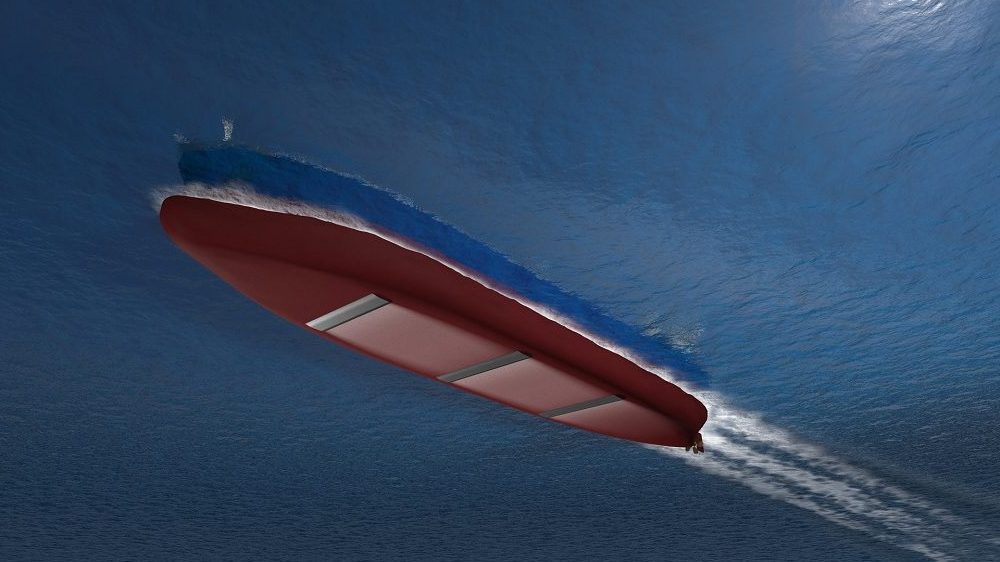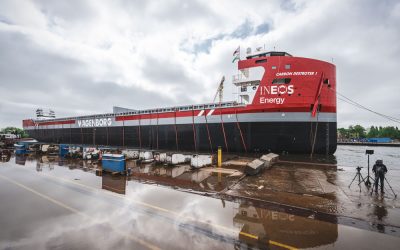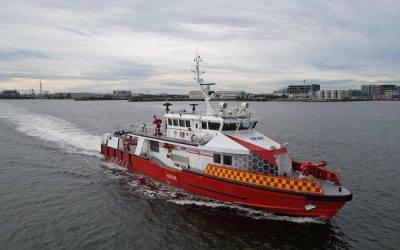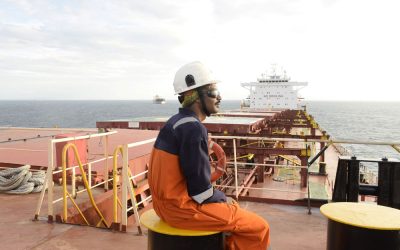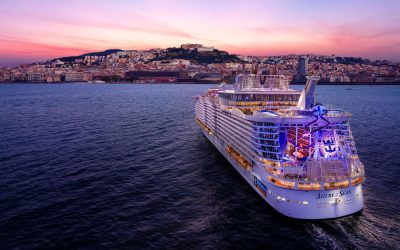As a solution that’s been officially recognised by IMO as a Category B-1 ‘Innovative Energy Efficiency Solution’ since 2013 (MEPC. 1/Circ. 815), the air lubrication system (ALS) is most certainly on an upward trajectory as shipowners strive to improve the CII ratings of their vessels.
According to DNV’s most recent Maritime Forecast Report as of June 2023 there were currently more than 347 ships worldwide either equipped, retrofitted or contracted for ALS systems. However, the probable number of installations over the next decade runs into thousands.
Although Mitsubishi Heavy Industries launched its Mitsubishi Air Lubrication System (MALS) in 2012, and Finnish company Foreship released its Foreship ALS in 2015, many of the headlines have been grabbed by UK-headquartered Silverstream Technologies. As of the end of November 2023 the company says it has 53 operating vessels with the proprietary Silverstream System installed and a further 180 ships contracted across all segments.
But it appears as though another competitor is now emerging. In 2021, Swedish marine technology group Alfa Laval acquired a minority stake in Rotterdam-based Marine Performance Systems (MPS), before taking up the option of a full buyout in March 2023. The principal attraction was MPS’s ‘fluidic air lubrication system’, FluidicAL, which has now been incorporated into the Alfa Laval portfolio and rebranded as OceanGlide.
Billed as a next-generation ALS, Oceanglide has current and ongoing installations for a Newcastlemax bulk carrier, LR2 tanker, MR2 Tanker, product tanker, ro-ro, and LPG tanker. Alfa Laval says there are a number of other projects in mature stages for installations in 2024 and beyond.
Among notable agreements signed recently is one with Singapore’s Kumiai Navigation that will see one of the operator’s LPG carriers retrofitted. A similar contract has been reached with Odfjell Ship Management for installation onboard a chemical tanker.
Fluidic air lubrication
The MALS, Foreship and Silverstream systems all utilise Bubble Drag Reduction (BDR) technology, a technique first developed during the 1970’s and ‘80’s that uses small or micro-sized air bubbles to reduce liquid density and thereby achieve skin friction reduction by theoretically as much as 80%.
However, as a 2019 white paper by class society ABS noted micro-bubbles are less easily produced at full-scale conditions and are also less effective at lower speeds due to buoyancy. Moreover, as bubbles get larger it becomes more difficult for them to maintain an even, spherical shape in turbulent flows.
By contrast Alfa Laval says Oceanglide is unique in its “intelligent” integration of fluidics – which it describes as the control of fluid pressure and flow by means of precisely shaped channels, without any moving parts – with air lubrication, utilising the air layer drag reduction more efficiently and with more effective coverage compared to traditional BDR.
The company is confident this translates into several advantages: “Firstly, OceanGlide generates an even and dynamic air layer with high efficiency. Using fluidics, it creates uniform air bubbles that coalesce almost instantly. This produces a homogenous air layer with only a small number of compressors. If there are too many compressors, the savings from air lubrication will all be spent on overhead.
“Second, OceanGlide’s air layer covers almost the entire flat bottom of the vessel. After all, only the area that’s covered with air will experience a reduction in drag. The coverage is provided in sections, which are created by air distribution bands.
“Third, OceanGlide allows air layer optimisation. The sections created by the air distribution bands can each be controlled individually. Full control of the air layer is crucial to maintaining consistent savings throughout the voyage.
“Finally, OceanGlide doesn’t require a large sea chest or a specific compressor location – as traditional front-injection systems do. Installing large sea chests, as a specific example, means extensive vessel reconstruction. By contrast, OceanGlide is an easy modification that can be done at any dock throughout the world, for example during scheduled dry docking.”
All in all Alfa Laval says Oceanglide has demonstrated a reduction in specific drag of 50-75%, real-world fuel savings of 12%, and with the consequent reduction in CO2 improved EEDI, EEXI and CII scores.
ALS well…
While it’s perhaps too early to say whether Oceanglide will prove a winner in the rush for ALS adoption it’s also accepted that the technology in general has some way to go before reaching full maturity.
DNV noted in the aforementioned Maritime Forecast Report that future research into ALS performance is likely to lead to significant improvements in performance, with the ability to maintain stable air layers for longer distances downstream a particular area of focus. Complementary hull coatings and the adaptability of ALS control systems to draft, trim and wave conditions are also likely to further boost the efficiency gains of the technology.
Yet it may be fitting that Alfa Laval plays a role in the ongoing evolution of ALS. Although the US Navy is usually credited with developing the technology in the post-War years – as a means of noise suppression to make ships less detectable by radar – it certainly wasn’t the first to experiment with the use of air bubbles to reduce frictional resistance.
In 1883 Alfa Laval’s founder, Gustaf de Laval, filed a US patent for a system whereby air would be fired from a series of compartments in the walls of the vessel as a method for increasing speed. The idea was never taken forward but perhaps he was just 140 years too early?
